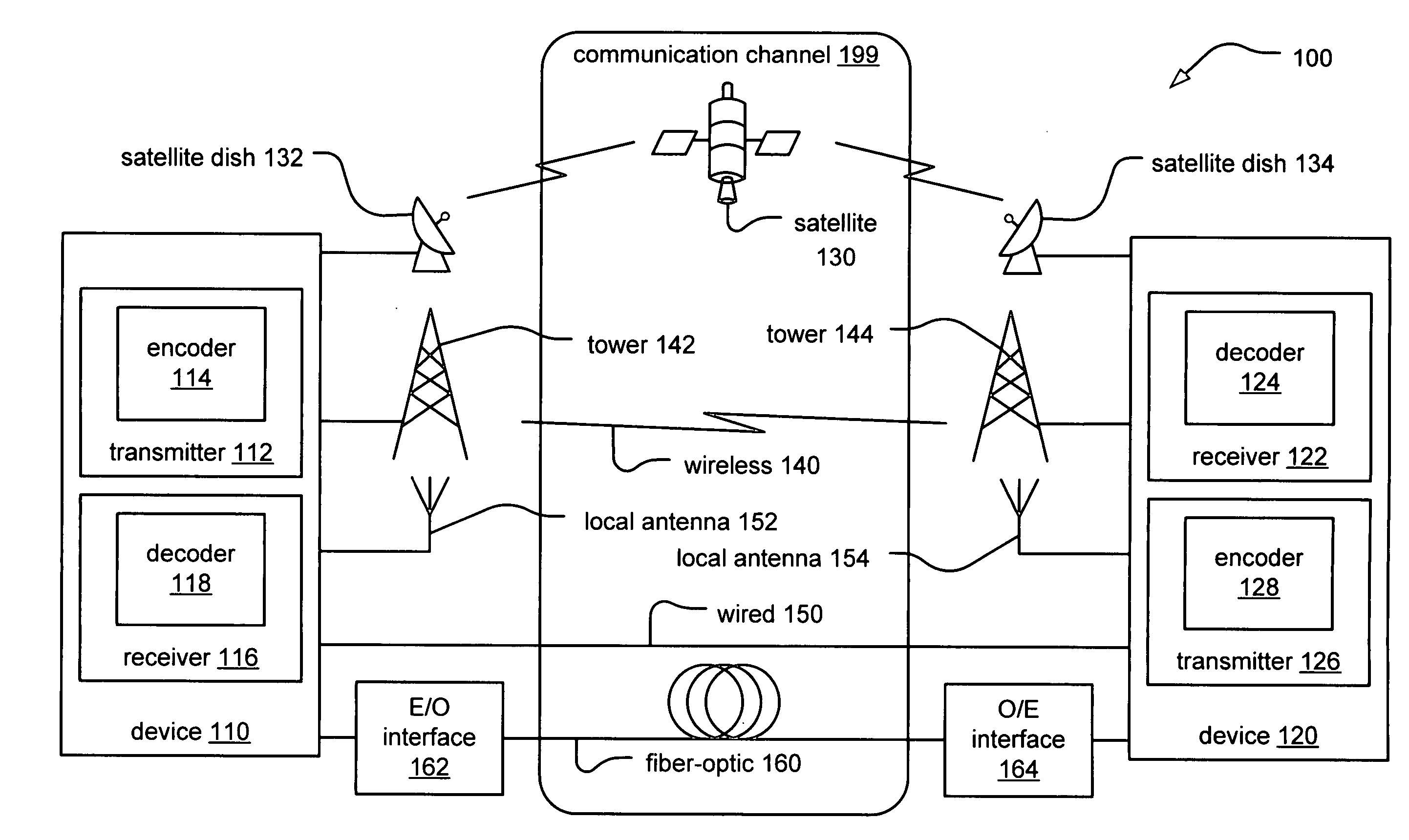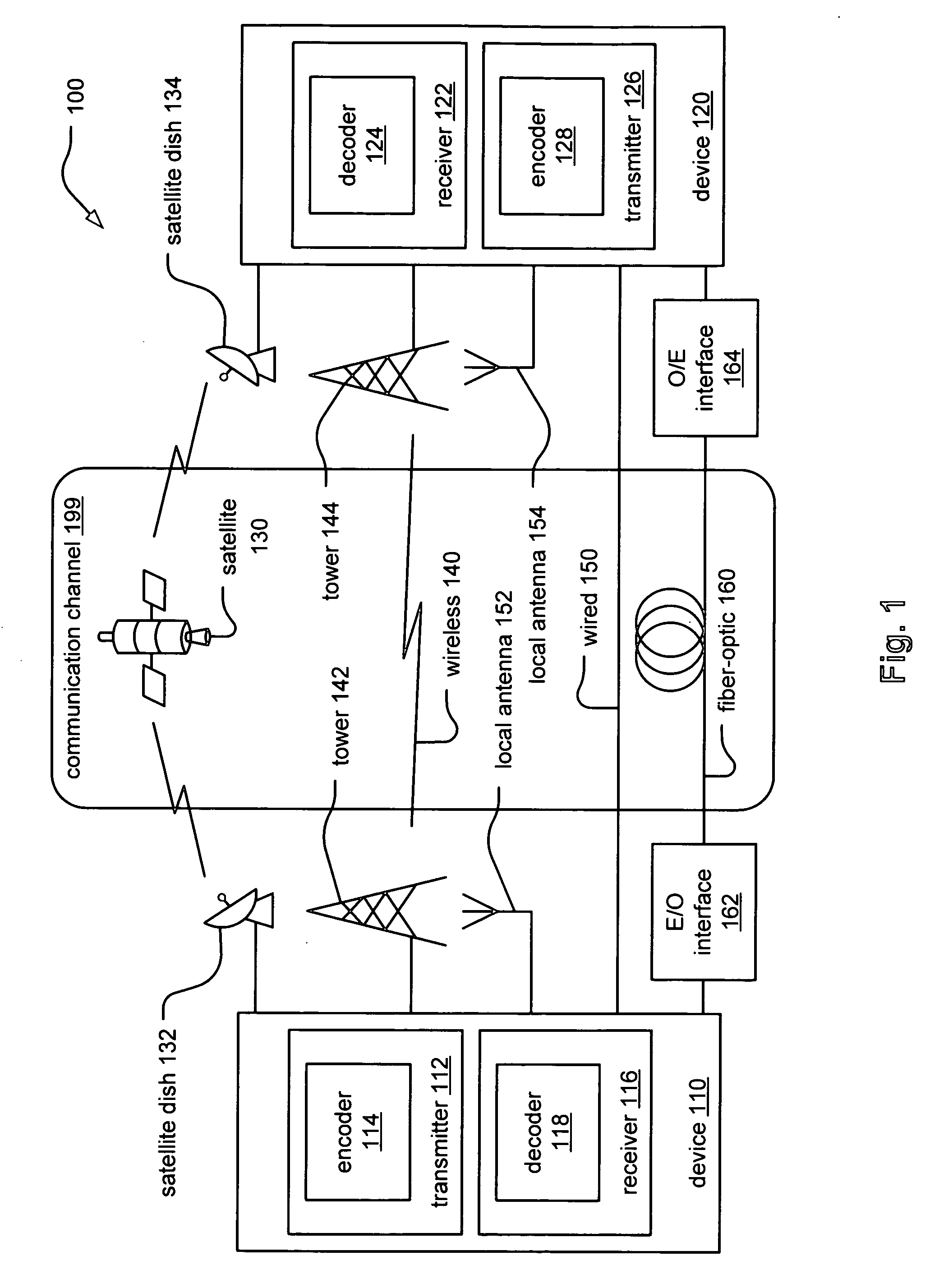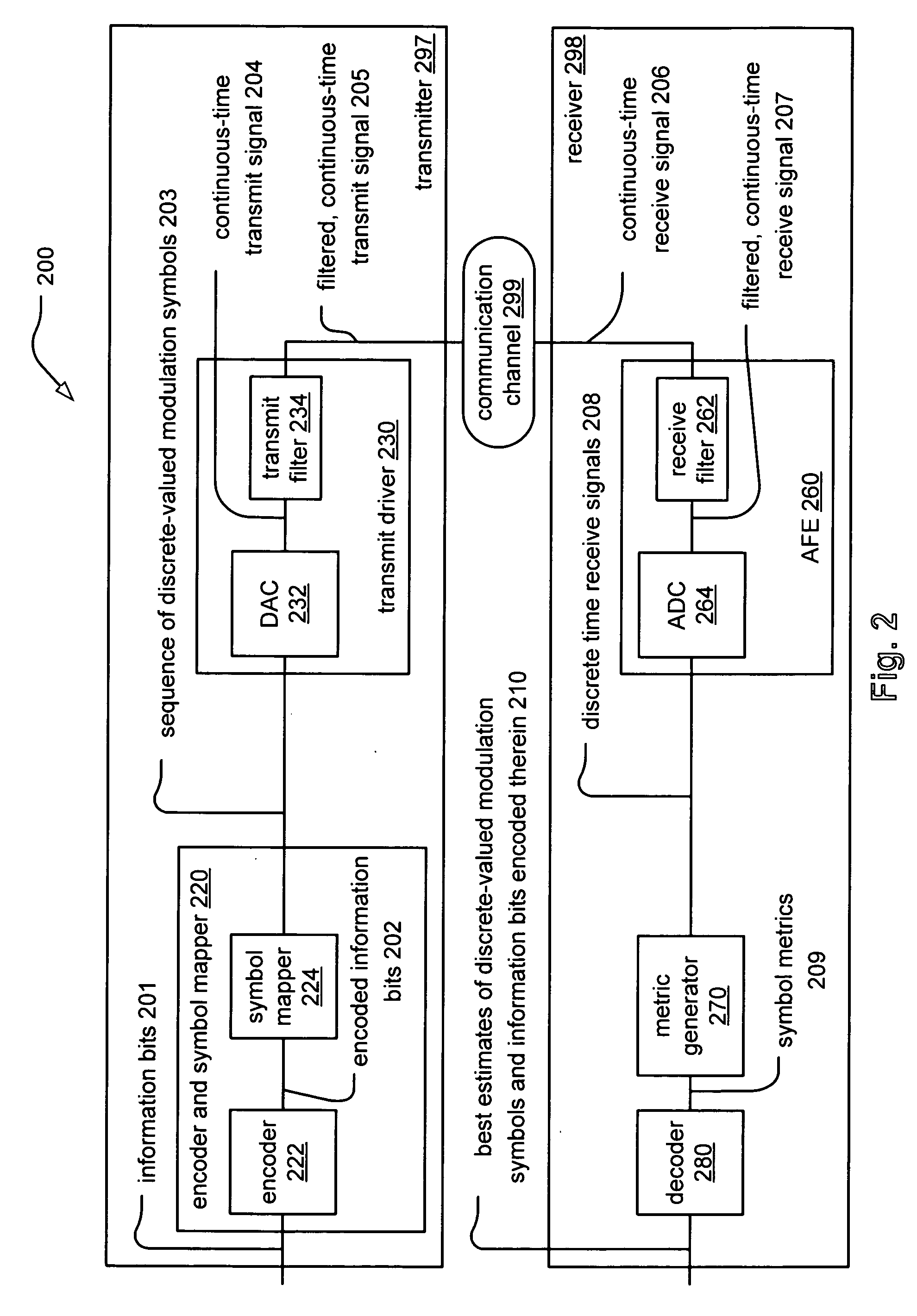Construction of LDPC (Low Density Parity Check) codes using GRS (Generalized Reed-Solomon) code
a low density parity and code technology, applied in the field of communication systems, can solve the problems of preventing their use in such applications, lack of flexibility presented by this approach by which other types of ldpc codes may be designed, and a significant challenge to the design of such ldpc codes and/or communication devices
- Summary
- Abstract
- Description
- Claims
- Application Information
AI Technical Summary
Problems solved by technology
Method used
Image
Examples
embodiment 700
[0128]FIG. 7 is a diagram illustrating an embodiment 700 of an apparatus that is operable to construct an LDPC code using a GRS code according to certain aspects of the invention. This embodiment shows pictorially how an apparatus 710 may be constructed to perform construction of an LDPC code (as shown in a block 714) using a GRS code (as shown in a block 712).
[0129] Once the apparatus 710 generates the LDPC code 714, it may be provided to an encoder 722 that is operable to perform encoding of information bits 701 to generate encoded information bits 702. In some embodiments, the encoder 701 also outputs uncoded bits 703 that have not undergone LDPC encoding.
[0130] It is also noted a decoder could alternatively be communicatively coupled to receive the LDPC code 714 generated by the apparatus 710 without departing from the scope and spirit of the invention. Devices at each end of a communication channel may employ the same LDPC code 714 that is constructed using the GRS code 712.
embodiment 800
[0131]FIG. 8 is a diagram illustrating an alternative embodiment 800 of an apparatus that is operable to construct an LDPC code using a GRS code according to certain aspects of the invention. This embodiment shows some of the various functional blocks (and / or modules) that may be employed within such an apparatus 810.
[0132] The apparatus 810 is operable to construct an LDPC code using a GRS code. The apparatus 810 includes a location set selection module 820 that is operable to select a location set and a non-zero element selection module 830 that is operable to select a plurality of non-zero elements from the Galois field.
[0133] The apparatus 810 may also be implemented to include a codeword vector identification module 840 that is operable to identify a first codeword vector of a GRS code, from among a plurality of possible codeword vector values. The codeword vector identification module 840 is also operable to identify a second codeword vector of the GRS code, from among the pl...
PUM
 Login to View More
Login to View More Abstract
Description
Claims
Application Information
 Login to View More
Login to View More - R&D
- Intellectual Property
- Life Sciences
- Materials
- Tech Scout
- Unparalleled Data Quality
- Higher Quality Content
- 60% Fewer Hallucinations
Browse by: Latest US Patents, China's latest patents, Technical Efficacy Thesaurus, Application Domain, Technology Topic, Popular Technical Reports.
© 2025 PatSnap. All rights reserved.Legal|Privacy policy|Modern Slavery Act Transparency Statement|Sitemap|About US| Contact US: help@patsnap.com



